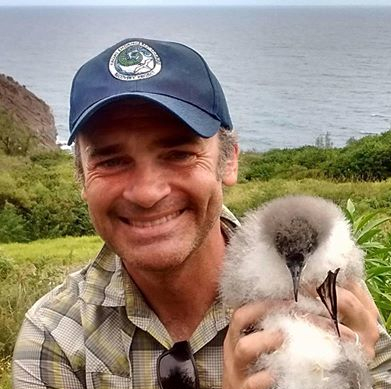
Island Resilience Strategy Lead
Oceans
[email protected]
As the Island Resilience Strategy Lead for The Nature Conservancy in California, Nick works in thematic areas of island conservation, invasive species, seabird restoration and threatened species. His responsibilities include advancing cutting-edge science to inform investment and actions at California, Pacific-wide and global scales, and participating on multi-disciplinary teams to drive scientific research agendas that benefit and leverage the The Nature Conservancy's island assets.
Between 2011 and 2019 Nick was the Director of Science for Island Conservation, a non-profit focused on preventing extinctions by removing invasive species from islands. Prior to Island Conservation, he spent five years managing the Kauai Endangered Seabird Recovery Project at the Pacific Cooperative Studies Unit for the University of Hawaii. Nick is an associate editor of the journal Biological Invasions, a member of the IUCN Invasive Species Specialist Group, and Research Associate for the Institute of Marine Studies at the University of California at Santa Cruz. He is an author on more than 60 peer-reviewed publications and earned his Ph.D. from the University of Tasmania, Australia in 2006.
What Nick is working on now:
I'm serving as PI on an exciting project to consolidate seabird reintroduction efforts around the globe, providing a foundational resource for practitioners, funders and managers in the field of seabird conservation.
Lara J. Brenner, Nathaniel Rindlaub, Juliana Matos, Scott Meyler, Sue Pollock, Falk Schuetzenmeister, Nick D. Holmes
Invasive mammals like rats pose a major threat to island ecosystems and endemic species. This study tests a wireless camera network on Santa Cruz Island that uses AI to detect nonnative mammals in…Lara J. Brenner, Piper D. Wallingford, Nick D. Holmes, John J. Knapp, John M. Randall, Scott A. Morrison
Island ecosystems are especially vulnerable to climate change, yet planning for these impacts remains challenging due to a lack of available data. This paper reports on a collaborative workshop across…Holmes ND, Spatz DR, Oppel S, Tershy B, Croll DA, et al.
Restoring islands by eradicating damaging, non-native invasive mammals such as rats, cats, goats, and pigs has repeatedly proven to be a high impact conservation action. New research…Rodríguez A, Arcos JM, Bretagnolle V, Dias MP, Holmes ND, Louzao M, Provencher J, Raine AF, Ramírez F, Rodríguez B, Ronconi RA, Taylor RS, Bonnaud E, Borrelle SB, Cortés V, Descamps S, Friesen VL, Genovart M, Hedd A, Hodum P, Humphries G, Le Corre M, Lebarbenchon C, Martin R, Melvin EF, Montevecchi WA, Pinet P, Pollet IL, Ramos R, Russell JC, Ryan PG, Sanz-Aguilar A, Spatz DR, Travers M, Votier SC, Wanless RM, Woehler E, Chiaradia A
Seabirds are amongst the most engaged species on our planet. Among these are petrels and shearwaters: species characterized by long ocean journeys for migration and feeding, and a dependence on…Nicholas D. Holmes, Olivier Langrand, Russell A. Mittermeier, Anthony B. Rylands, Thomas Brooks, Dena R. Spatz, James C. Russell, Wes Sechrest, Federico Méndez Sánchez, Cristina Mittermeier (Editor)
Covering only five percent of the land on our planet, islands are home to an estimated 20 percent of the world’s bird, reptile, and plant species, as well as the most astonishing examples of…Holmes ND, Keitt BS, Spatz DR, Will DJ, Hein S, Russell JC, Genovesi P, Cowan PE, Tershy BR
Indicators for tracking conservation efforts at a global scale are rare but important tools for understanding trends and measuring progress towards global conservation targets. Eradication of invasive…Wolf CA, Young HS, Zilliacus KM, Wegmann AS, McKown M, Holmes ND, Tershy BR, Dirzo R, Kropidlowski S, Croll DA
Prior to eradication in 2011, non-native invasive rats were known to be active seed predators on Palmyra Atoll, Central Pacific Ocean. This paper reports on native and non-native tree and palm…